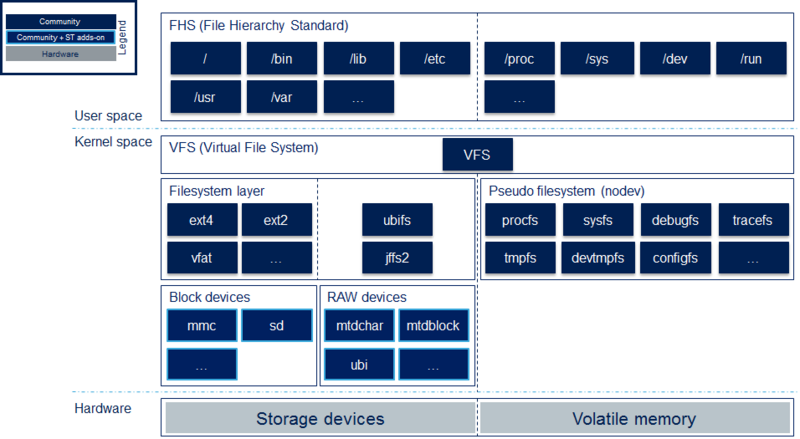Registered User mNo edit summary |
Registered User No edit summary |
||
| Line 1: | Line 1: | ||
{{ApplicableFor | |||
|MPUs list=STM32MP13x, STM32MP15x | |MPUs list=STM32MP13x, STM32MP15x, STM32MP25x | ||
|MPUs checklist=STM32MP13x,STM32MP15x | |MPUs checklist=STM32MP13x, STM32MP15x, STM32MP25x | ||
}}</noinclude> | }} | ||
<noinclude></noinclude> | |||
'''OpenSTLinux filesystem''' follows the Standard Linux<sup>®</sup> filesystem, represented on the below diagram. | '''OpenSTLinux filesystem''' follows the Standard Linux<sup>®</sup> filesystem, represented on the below diagram. | ||
Latest revision as of 08:56, 5 June 2024
OpenSTLinux filesystem follows the Standard Linux® filesystem, represented on the below diagram.
It is based on the File Hierarchy Standard (FHS) at user space level.
Both physical storage devices and volatile memory file systems are supported, by using two paths:
- - Filesystem layers which are associated to a device (with both block and raw interfaces), and which manage persistent data
- - Pseudo filesystem which manages volatile data linked to the current running session
The Virtual File System[1] is a Linux core feature which proposes an abstraction layer for the Linux user space.
1. References
